Being hidden by well-known artworks, Luong Xuan Nhi’s advocacy paintings were neglected for several decades.
Luong Xuan Nhi was called blue painter due to the nature in his paintings “Rural landscape”, “Palm Hill” or portraits of women with a blend of gentle blue. Although advocacy paintings were silent artworks, they played an important role in his career with converged style featuring Western classicism.
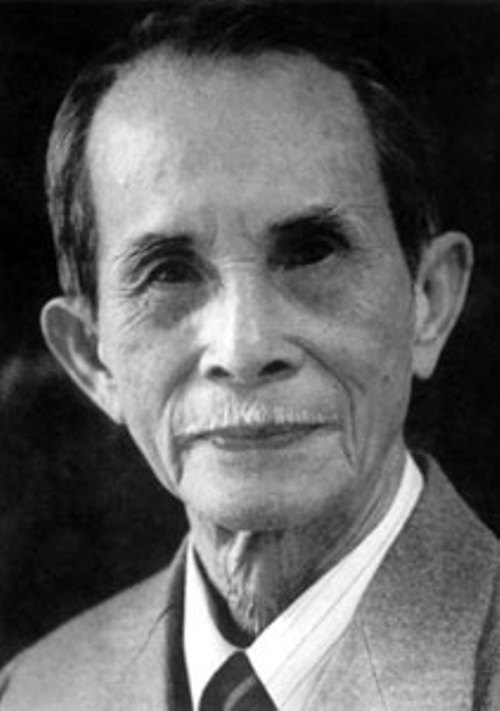
Painter Luong Xuan Nhi
During the French Resistance and American Resistance, each of his advocacy paintings was considered as a small gift making a visual impression and highly influencing soldiers’ spirit.
According to the book “Hanoi fine arts – Remnants of memory”, the art analyst Nguyen Hai Yen offered painter Luong Xuan Nhi respectful words and confirmed his role in Vietnamese fine arts with other artists such as Nguyen Do Cung, Hoang Lap Ngon and Luu Van Sin.
He was famous for his paintings of young women, landscapes and he was also the pioneer to take oil painting to Vietnam. However, advocacy paintings were his silent artworks during the French Resistance and the American Resistance.
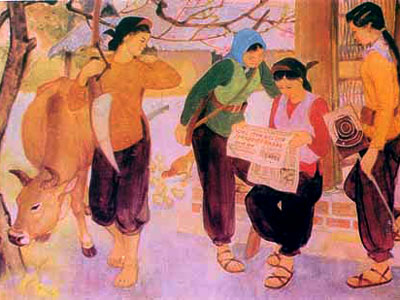
The art analyst Nguyen Hai Yen said that: “Painter Luong Xuan Nhi told me that he tracked the path No. 5 from Hanoi to Hai Phong. It was the main way from the plain to Hanoi; hence, it witnessed many soldiers’ escapes during the French Resistance. Painter Luong Xuan Nhi was entrusted to execute paintings with a high hope of sending them to the soldiers.”
Two advocacy paintings of Luong Xuan Nhi “Why” and “Noel – Noel” are now preserved at the Vietnam Fine Arts Museum. In terms of the painting “Why”, Luong Xuan Nhi painted a French soldier wearing a steel hat, kneeing down and raising hands. It seemed to be a question implying the protest against the unjust war of the French colony in Vietnam.
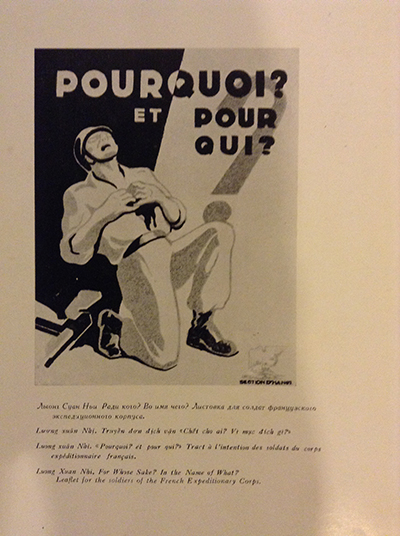
Likewise, in the contradictory context, the artwork “Noel – Noel” depicted two images: the first image was the French soldier like a lifeless corpse, a tree without any leaves because of napalm bombs. The second image was luxurious life of French teenagers. They danced under the shimmering light and were engrossed in luxurious parties in France.
Luong Xuan Nhi’s paintings did not convey great things but aimed at French soldiers’ psychology to elicit and mobilize their deepest emotions. From this perspective, painter Luong Xuan Nhi was like a dedicated graphic artist. He fully exploited the language of graphics to work on beautiful paintings expressing deep meanings.
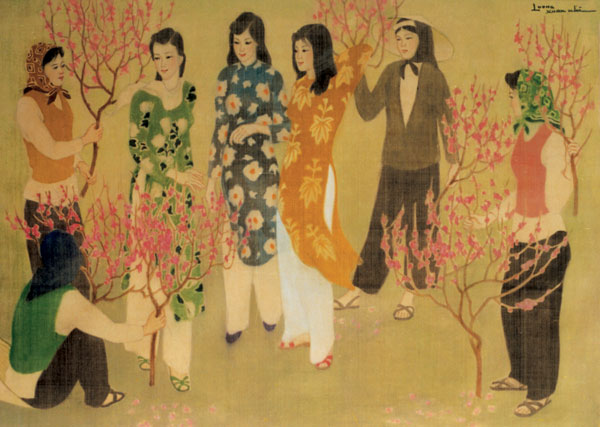
The painting “Peach blossom market” – 1985, silk painting – collected by The Hanoi People’s Committee
Painter Luong Xuan Doan – Luong Xuan Nhi’s nephew said that: “I supposed that painter Luong Xuan Nhi made a valuable contribution when expressing the images of young women, children (soldiers’family) waiting for their husbands, fathers. During the war, advocacy activities were of importance and he succeeded in advocating and brought American soldiers surprising gifts. They could keep a small postcard in their wallets or pockets. I believed that some of them still kept those postcards on their arrival in America.
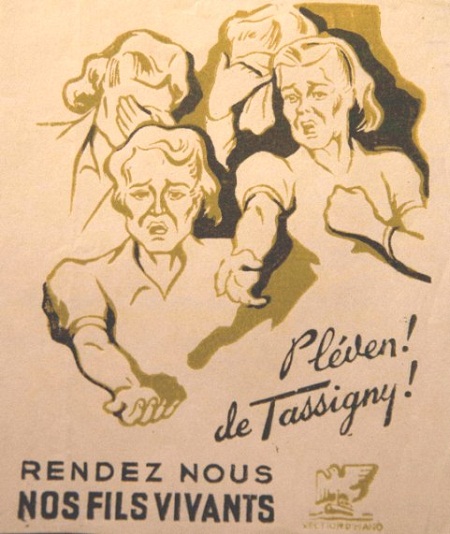
Bring our surviving children back
The painting done by Luong Xuan Nhi with the words: “De Trassigny!
Bring our surviving children back. ”
Luong Xuan Nhi’s advocacy paintings were sent to a large number of people on both sides of the battle line but the painter had to keep secret. Luong Xuan Doan remembered that when his uncle and he were evacuated, the army often picked Luong Xuan Nhi up to execute paintings within a short time. Sometimes, painter Luong Xuan Doan saw his uncle drawing in a cottage with a relaxed, gentle and quiet demeanor. Many of Luong Xuan Nhi’s friends said that: “The orderliness of thinking and the adjustment of an intellectual come from Luong Xuan Nhi’s heart.”
According to Luong Xuan Doan, advocacy activities were a silent job and it was not done by all painters. It was Luong Xuan Nhi’s historic mission. He devoted himself to the development of Vietnamese Contemporary Fine Arts.

8 years after his death, his room where he worked was preserved by his children. They always considered him as a strict and kind father. For his students, they showed a great respect for him who cultivated their talents without any impositions. Perhaps, his lesson in the combination between the dignity and the talent would be always valuable. Actually, it is still a new story that makes the following generations evaluate themselves and aim at proper lifestyle and career.


